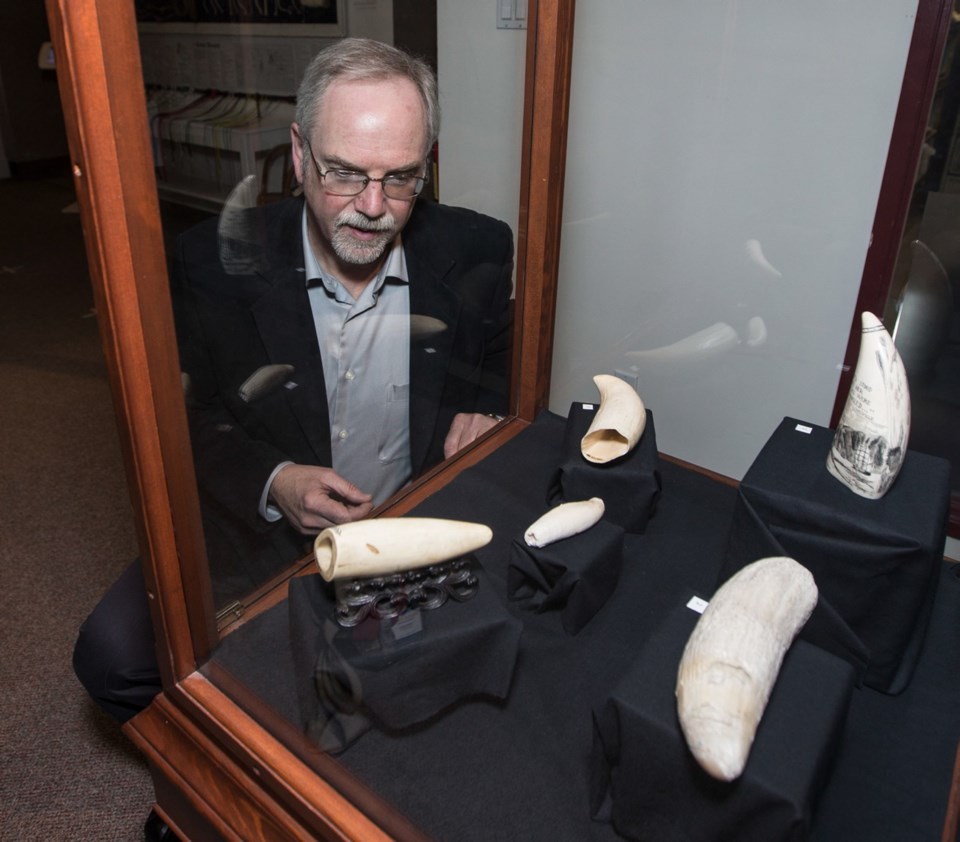Before steam ships, motor vessels and explosive-propelled harpoons, ocean waters around Vancouver Island were home to year-round resident populations of true whales, humpbacks, right whales and fins.
David Leverton, executive director of the Maritime Museum of B.C., said the large mammals lived in the Salish Sea, the Inland Passage and Barkley Sound.
But they were gone probably by the early decades of the 20th century.
“It just speaks to the attitudes of the day,” Leverton said.
“It wasn’t an issue of ‘What is the right conservation strategy?’ or ‘How many whales should we be leaving behind?’ ”
The Maritime Museum of B.C. opened a new exhibit Saturday on the whaling industry as it was pursued from Vancouver Island and the province until 1967 when it ended in Canada.
The show, A Whale’s Tale, continues until Aug. 30.
Leverton said the exhibit is an attempt to get Victorians and visitors to start thinking about marine mammals beyond the orca, or killer whale. While definitely an iconic species for locals and tourists alike, the orca is not even a whale. It’s more closely related to dolphins.
The larger true whales first appeared off Vancouver Island about 10,000 years ago. People have been harvesting them for at least 4,000 years.
“The earliest records we have are from about 4,000 years ago when whale bone was being taken from beached animals up and down our coast,” Leverton said.
He said when Europeans arrived on Vancouver Island they quickly went after the big ones. During the time from about 1850 to the early 20th century, the resident whales of the Salish Sea and Inland Passage were quickly extirpated.
Whaling stations, to strip off the animals’ blubber and render it into oil, were established and later abandoned on Cortes Island and Hornby Island. A village named Whaletown still exists on Cortes.
Leverton said whaling really got going in 1907 when the Pacific Whaling Company was established.
Whaling stations were built in Sechart in Barkley Sound, now a fishing lodge, Kyuoquot, still a First Nations community, and in Coal Harbour which still remains.
After the resident whale populations off the west coast of the Vancouver Island were finished off, whalers turned further offshore. With aircraft spotting over head, the harvest became more efficient.
Meat of the animals was canned and mostly sold as pet food. Skeletons were turned into fertilizer, But the biggest value was in the oil, obtained by rendering the creatures’ thick, insulating layers of blubber. It was used for food in some countries, for fuel, and for industry.
“They could get enough to produce barrels and barrels and barrels of the stuff,” Leverton said. “Whaling was an industry. It was just like forestry, mining and everything else.”
Leverton said records reveal between 1905 and 1967, with brief respite for the Second World War, B.C. whalers harvested over 24,000 of the animals. As late as the 1950s, they were taking 300 to 400 per year.
Now the animals seem to be coming back. Johnstone Strait has recorded fin whales and a sperm whale.
“It really is exciting to see these large cetaceans moving back into the water off the east coast of Vancouver Island,” Leverton said. “But again they were here for thousands of years travelling up and down our coastline.”
• To learn more about the Maritime Museum of British Columbia and its exhibits, go to mmbc.bc.ca.



